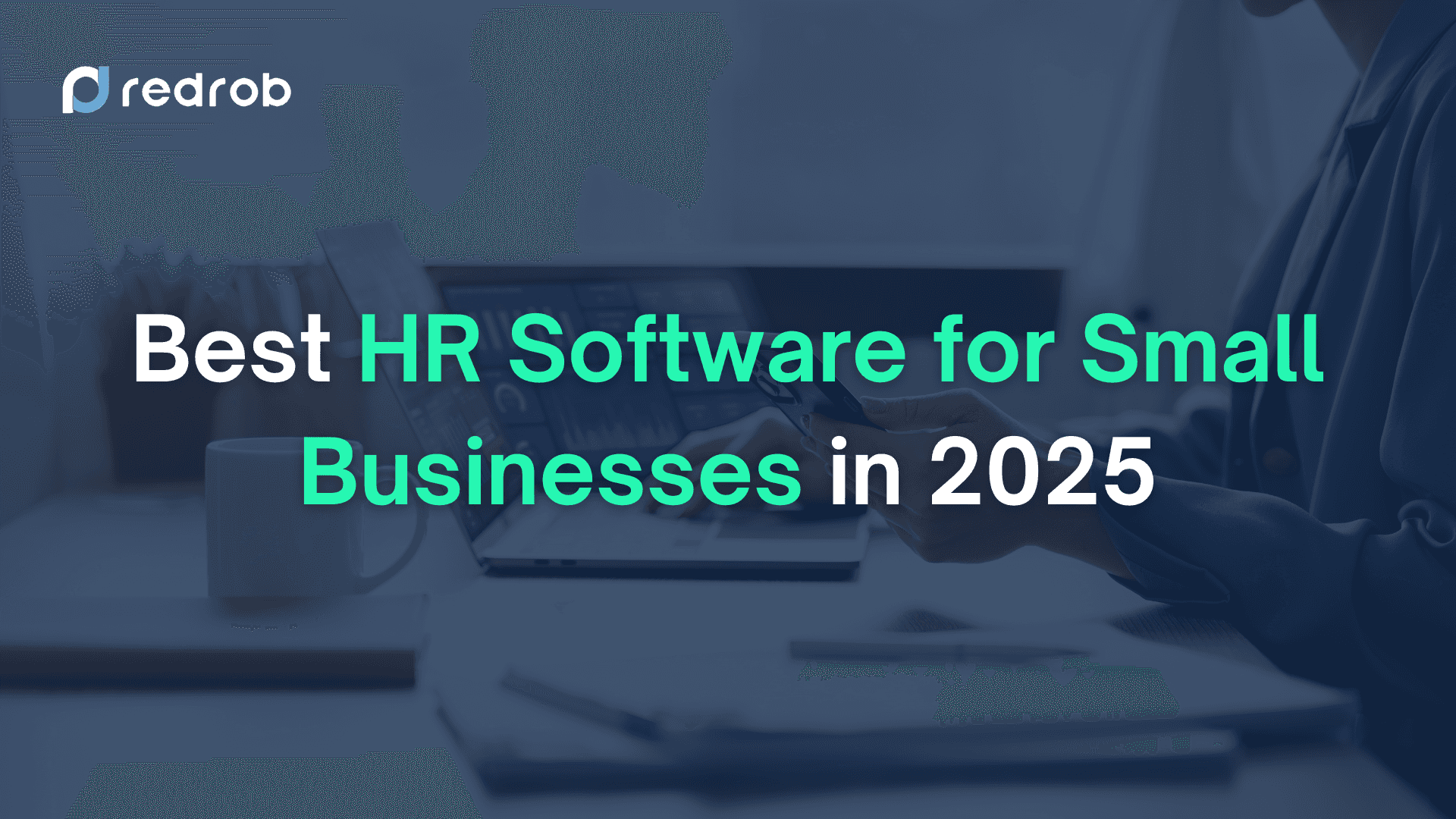ATS- Applicant Tracking System
•
May 17, 2024

Soumyata Singh
Recruiting managers often face many hiring challenges while looking for quality candidates for urgent job openings. These challenges could involve anything from time-consuming procedures to hiring-related costs. It also becomes hectic for recruiters to manage and sort too many applications during peak hiring periods like college placement season. Even hiring challenges related to college placements include receiving very few to no quality candidates.
So what to do? Where are they lacking? How can you manage everything?
The most effective way to tackle these issues is to implement an Applicant Tracking System (ATS). By automating the candidate sorting and screening process, an ATS can speed up these procedures and save hiring time and money while maximising the speed and accuracy with which qualified applicants are located.
What is an Application Tracking System?
Companies worldwide use an Application Tracking System (ATS) software, which keeps track of your hiring process. It helps sort through applications, organise candidate information, and streamline the steps from job posting to hiring.
An ATS utilises keywords and job criteria, making it simpler for recruiters to find qualified candidates. By smoothening the entire recruitment workflow, an ATS does everything from marketing the job openings to scheduling interviews to introduce the new joiner.

How is an ATS Useful in Your Hiring Process?
When candidates apply for a job through a talent search website, their data goes directly to the ATS database through some screening questions. If any of these short questions receive an unsatisfactory answer per the ATS, the candidate’s resume is not shortlisted for the next round.
Besides, an ATS improve hiring by posting jobs, managing resumes, sorting applications, and setting up interviews. It also improves communication, provides insights into the hiring process, tracks candidate performance, and assists in making informed decisions, making it an essential tool for efficient recruitment.
Know More - How to Use ATS for Hiring
Furthermore, using an ATS is a boon to hiring managers as it utilises keywords that are present in a job title, skills, educational background, or overall description.
Suppose the recruiter is looking for a web developer. Then, s/he will mention this; they can also use the keyword “web development.” Keywords related to programming languages like HTML, CSS, Python, C++, etc., may also be present. Other skills like DSA and MySQL are the keywords most commonly used in this category.
Thus, resumes with all of these skills will appear to the recruitment team, while others will remain hidden.
This isn’t all! There’s still a lot more to what magic an ATS can do to your recruitment. Here are a few more ATS benefits that enhance the entire recruitment process.
Provide Better Candidate Experience
An ATS boosts the application process by automation, making it more convenient for candidates to apply and, thus, hear back faster. This non-delayed approach helps create a good impression of the company, making the whole experience more positive for applicants.
More Effective Hiring Process
ATS helps by automating tasks like sorting resumes and scheduling interviews. This speeds up the recruitment cycle. This allows managers to focus more on evaluating candidates thoroughly and make better hiring decisions.
Reduced Hiring Cost
Many tasks within the recruitment process are automated, which, in turn, reduces the expenses related to staff, job advertisement, manual resume evaluation, and interviews as well. This not only shortens the hiring cycle but also cuts the relevant cost.
Improved Hire Quality
Application Tracking Systems improve hiring quality manifold through strict protocols and automation. They eliminate human bias in the hiring process while selecting only skilled candidates according to the criteria for the job opening. By complying with the criteria, ATS ensures that only the best applicants are selected.
How to Increase Your Resume Score and Make it ATS-Friendly?
ATS assigns a score to every resume during the initial stage of the selection process. The score is based on multiple factors, such as technical and soft skills, academic degrees or certifications, work experience, and other job-relevant keywords. It might also consider the word count, as a resume that is too lengthy gets a lower score.
Depending on this, a resume only with a high score is selected for the next round of interviews.
If you want to get a higher score on your resume, you need to make an ATS-friendly resume. Wondering how to do so? We have curated do’s and don’ts to implement while creating a resume. Let’s check these out.
Do’s And Don’ts To Follow While Creating An ATS-Friendly Resume
Let’s first understand what an ATS-friendly resume is. This resume is designed to be readable and compatible with the application tracking system (ATS). An ATS-optimised resume has a much better chance of getting an interview call.
DO’s
Use ATS Optimised Keywords
Utilise industry and job-specific keywords while writing your resume, as these make your resume more prioritised in the ATS ranking. This shows how closely your qualifications, experience and skills align with the job.
Select Ideal Resume Format
An ideal resume format means an easily scannable and recognisable resume file. Unless the organisation states otherwise, you can utilise formats like PDF and docx.
Make Your Resume Error-Free
Conduct good proofreading to make your resume free from any grammatical or spelling mistakes. Avoiding this step can make your resume unrecognised despite all the hard work you put together.
Use a Professional Font
Make it a habit to always use professional fonts like Arial, Times New Roman, Cambria, and Garamond when writing a resume. These typefaces are globally considered ideal for resumes, making your resume look concise and organised.
Use Bullet Points
Using bullet points is one of the best ways to organise your resume. When structured in bullets, it becomes easier for humans and ATS to scan your achievements and qualifications.
DON’Ts
Avoid Making Your Resume Colourful
Using unnecessary colours can be problematic with ATS or any other AI Checker. While it might be tempting to use graphics and photographs, doing so will cost you your chance of being selected for the job.
Don’t Use Stylish Fonts
Adhering to the globally accepted professional fonts makes your resume easily readable by ATS. Using simple and ATS-friendly formatting increases your chances of getting a higher ATS ranking.
Don’t Make It Too Long
Keep your resume concise, ideally one page and max. up to two pages to maintain ATS’s attention. Don’t make the mistake of writing a lengthy resume, thinking it may flaunt your achievements, as it will backfire.
Don’t Write an Essay
Utilise concise and easy-to-interpret language using bullet points. Avoid writing long paragraphs, as it will rank lower in the ATS ranking and could even be rejected.
Don’t Include Unnecessary Information
Including only the most-prioritised information relevant to your job position in your resume is acceptable. Avoid using content like irrelevant certifications or hobbies (gardening, dancing, etc.).
Various Types of ATS
Application tracking systems (ATS) are specialised instruments designed to facilitate the hiring process in various ways. There are various types of ATS, like those at Redrob, each with unique qualities designed to meet certain hiring demands and boost the efficiency of recruiting strategies.
Resume Filtering ATS
This type of ATS automates the resume screening process by filtering and ranking candidates based on predefined keywords and criteria. It significantly boosts the selection process by identifying the most suitable applicants for further evaluation.
Interview Scheduling ATS
The ATS handles scheduling appointments, regularly reminds interviewers and candidates, and works with calendars for faster availability checks and bookings. All of these features help simplify and speed up the interview process.
Multiple Hiring ATS
This applicant tracking system (ATS) is designed for complicated hiring campaigns. It makes it easier to manage multiple hiring processes in various departments or locations, guaranteeing a unified and structured strategy for effectively growing the workforce.
Recruitment Marketing ATS
This focuses on building a stronger employer brand and reaching potential candidates through strategic marketing. It uses data-driven marketing techniques to attract, engage, and convert top talent by enhancing the candidate experience from the first touchpoint.
Factors to Consider while Selecting an ATS?
It is essential not to just go for any ATS; instead, research the one that’s perfect for you. An ideal system streamlines your recruitment process, enhances candidate experience, and ensures data security, directly impacting your organisation's hiring success.
Reliability
Make sure the system is stable and consistently operational, minimising delays and interruptions.
Confidentiality
Choose an ATS that guarantees data security and privacy for both candidates and the company.
Candidate Experience
Consider systems that provide a smooth and insightful application process for candidates.
Pricing and Packages
Look at the costs and what each package offers. Choose an ATS that fits your budget and meets your needs without overspending.
Personalisation
Go for an ATS that allows customisation to fit your specific recruitment workflows.
User-Friendly Interface
Select an ATS with an easy-to-navigate interface for both recruiters and candidates.
Comprehensive Insights and Reporting
The ATS should offer detailed analytics and reporting features to track and optimise your hiring process.
How much does an ATS Cost?
Fixed Cost
Some applicant tracking systems charge a one-time fee and offer unlimited access to all features, regardless of the number of recruiters, roles, or applicants. This might be cost-effective for big businesses with high demand.
Per Recruiter
Pricing based on the number of recruiters using the system allows smaller teams or companies flexibility. This model scales as your recruiting team grows.
Per Job Opening
This ATS type, which charges based on the number of job vacancies posted, is ideal for businesses with varying hiring needs because it aligns costs with hiring activities.
Per Platform
Your recruiting approach may become more flexible if you choose an applicant tracking system (ATS) that charges you based on the number of platforms or connections you use, including job boards or social media channels.
How to Implement Popular ATS to Make Hiring More Efficient?
Quality hiring is important today, and popular Applicant Tracking Systems (ATS) play a key role in this process. With these ATS, organisations focus more on selecting the best candidates while greatly enhancing the overall efficiency of their recruitment efforts. Thus, let’s first explore India's most popular Application Tracking Systems.
Redrob ATS
Redrob's ATS is currently recognised as one of India's most popular and leading applicant tracking systems. Known for its performance and affordability, it offers a comprehensive suite of features that enhances the recruitment process efficiently.
Key features include automated resume screening, effective communication tools, and detailed analytics that enhance decision-making. Its user-friendly interface ensures ease of use for both recruiters and candidates, making it a top choice for organisations aiming to optimise their hiring process.

Bullhorn
Bullhorn ATS is a convenient tool that helps recruitment agencies organise and automate their hiring tasks. It makes it simpler to track candidate interactions and manage emails as per various needs and preferences. It's known for smoothly managing detailed and complex recruitment activities.
Lever
Lever is an ATS that helps in the hiring procedure by combining candidate management and automation features. It eases team collaboration and offers a clear overview of each candidate, making it easier for hiring teams to make quick and informed decisions.
How To Implement An ATS In Your Recruitment Process?
Once you make up your mind about which ATS you want to implement in your hiring process, here’s how you can do so:
Understand your Requirements.
Figure out what ATS features you need based on your company's size and hiring requirements.
Pick an Ideal ATS
When buying an ATS that meets your needs and budget, consider areas like customer service, scalability, ease of use, and integration potential.
Start Establishing ATS
Customise the ATS as per your unique hiring roles, access controls, and operations. Connect it to other HR software, including payroll and HRIS programs.
Educate Your Hiring Team
Instruct your hiring team on how to use the system efficiently, focusing on advertising job openings, analysing applications, and interacting with applicants.
Supervise Performance
Set up the ATS and monitor its function and effect on the hiring process. Get user feedback to understand what needs improvement.
Analyse and Adapt
To better meet your company's changing needs, analyse the system's effectiveness at regular intervals and make the necessary adjustments to its features and protocols.
The Scope of Application Tracking Systems in Future
As technology advances, the recruitment and hiring processes are also transforming. Here's what the future might hold for Applicant Tracking Systems (ATS):
A Blend with AI
Artificial Intelligence will be heavily connected with ATS in the future, expanding its capacity to interpret and analyse resumes better. AI will help estimate candidate success, ensuring hiring decisions are made faster and more sensibly.
Video CVs & Resumes
As technology advances, applicant tracking systems (ATS) will begin to accept video CVs and resumes, helping candidates showcase themselves more creatively. This will give their personality and skills a deeper context, enabling recruiters to make better-informed decisions.
Better Applicant Experience
The candidate experience will be a higher priority for ATS systems in the future, resulting in more effortless and stimulating interactions throughout the application process. Everyone will find it easier and more accessible to apply for jobs due to improved communication tools and mobile-friendly software.
FAQs
What is an Applicant Tracking System (ATS)?
An applicant tracking system, or ATS, is a software program that helps companies simplify hiring by automating application management, candidate screening, interview scheduling, and process tracking.
What are the key benefits of using an ATS?
The use of an applicant tracking system (ATS) increases recruitment efficiency by automating operations, improving data arrangement, and enabling quicker and more accurate candidate screening.
How does an ATS enhance candidate experience?
An ATS enhances the candidate experience by streamlining the application process, providing timely updates, and maintaining clear communication, which helps keep candidates engaged and informed.
Can small businesses benefit from using an ATS?
Yes, applicant track hires and (ATS) can help small businesses save up on manual labour, enhance the quality of hires, and scale their hiring procedures effectively as they expand.
How does an ATS integrate with other HR software?
Most ATS are compatible with various HR systems, such as salaries, performance evaluation, and orientation tools, creating a smooth data flow across HR processes.



